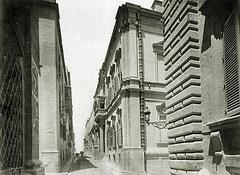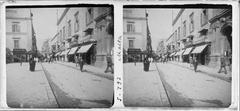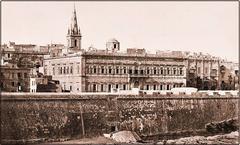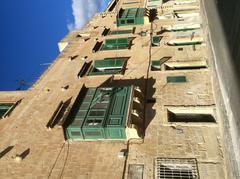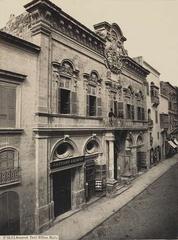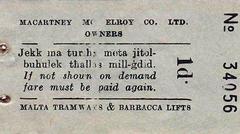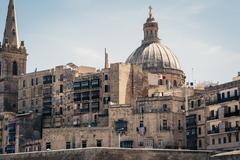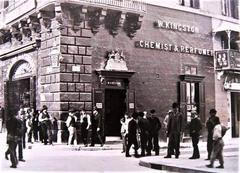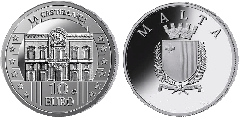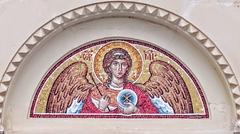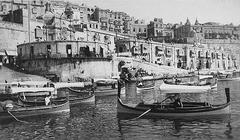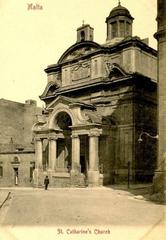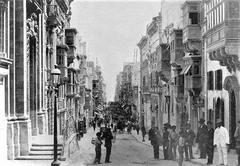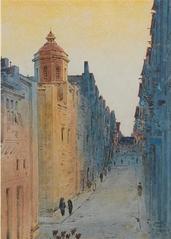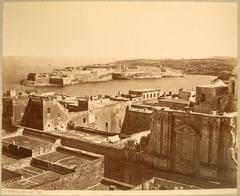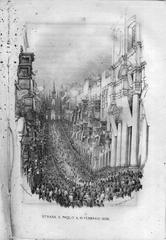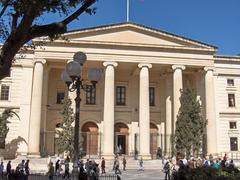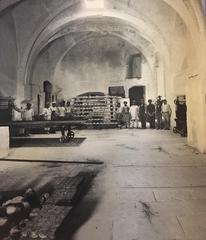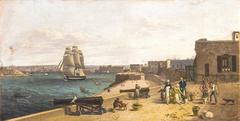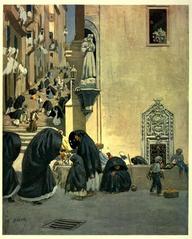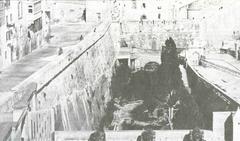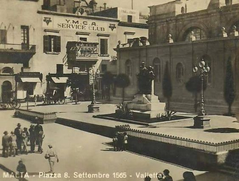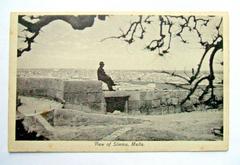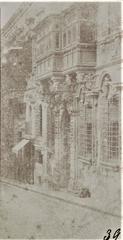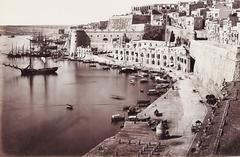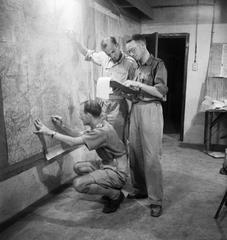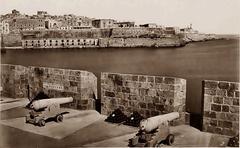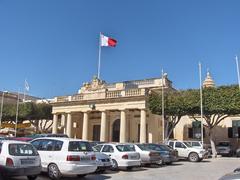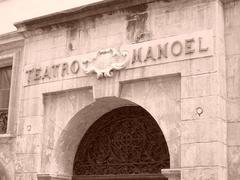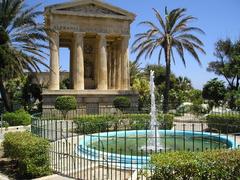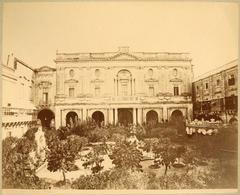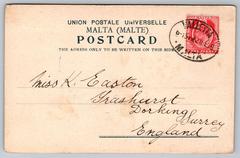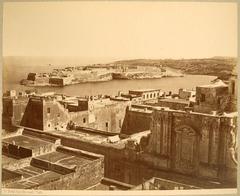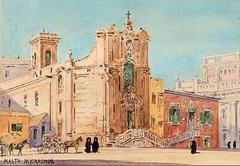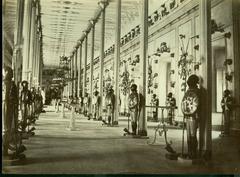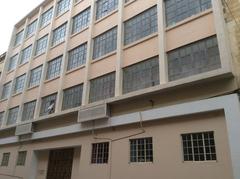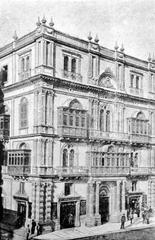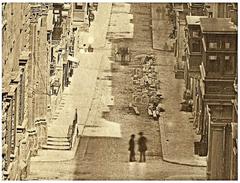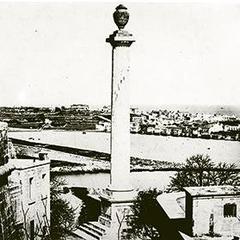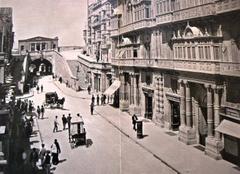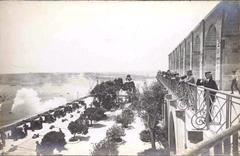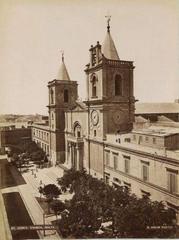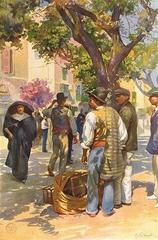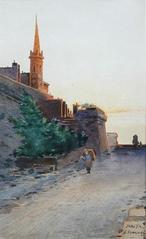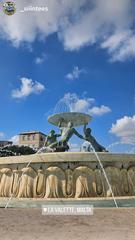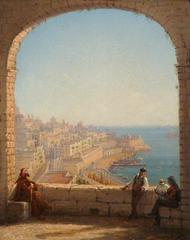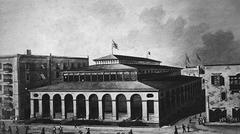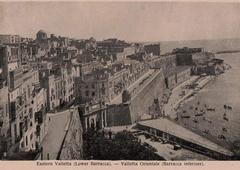Grandmaster’s Palace, Valletta, Malta: Visiting Hours, Tickets, and Historical Highlights
Date: 14/06/2025
Introduction
The Grandmaster’s Palace in Valletta stands as a testament to Malta’s rich historical, political, and artistic heritage. Constructed in the late 16th century by the Knights of St. John, this architectural masterpiece has served as the residence of the Grand Masters, the administrative heart of the Order, and later, the seat of Malta’s President and Parliament. Today, it is one of the island’s most significant cultural landmarks, drawing visitors eager to experience its Renaissance and Baroque architecture, remarkable interiors, and extensive collections, including the Palace Armoury. This guide provides everything you need to plan your visit—including current opening hours, ticket prices, accessibility features, and tips for making the most of your experience in Valletta.
For official updates and planning resources, refer to the Heritage Malta website.
Table of Contents
- Introduction
- History and Significance
- Architectural and Artistic Highlights
- The Palace Armoury
- Visiting Information
- Nearby Attractions
- Recent Restorations and Events
- Frequently Asked Questions (FAQ)
- Conclusion
- Sources
History and Significance
Origins and Construction
The Grandmaster’s Palace, locally known as Il-Palazz tal-Granmastru, was established shortly after the founding of Valletta in 1566. Maltese architect Girolamo Cassar designed the building, merging the Auberge d’Italie with two private houses to create a stately complex with dual courtyards (culture-malta.org). Initially serving as the Knights’ headquarters, the palace became the official residence of the Grand Masters in 1571 under Pierre de Monte.
Evolution Through the Ages
Under the Knights, the palace housed council meetings, diplomatic receptions, and ceremonial events. Key spaces such as the Throne Room and Council Chamber were adorned with frescoes and tapestries reflecting the Order’s power and Malta’s Mediterranean role.
The French briefly occupied Malta in 1798, renaming the palace Palais National. British rule brought further adaptations, including the conversion of the kitchen into an Anglican chapel and the addition of a semaphore station. Despite wartime damage, the palace has undergone significant restoration to preserve its grandeur.
Post-independence, the palace continued its political legacy as the seat of Malta’s President and Parliament (until 2015). Today, it remains a protected Grade 1 national monument, symbolizing Malta’s sovereignty and resilience (maltatina.com).
Architectural and Artistic Highlights
Exterior Features
The palace’s façade, originally austere Mannerist in style, was unified and embellished with Baroque portals and wooden balconies by Grand Master Pinto de Fonseca in the 1740s. Notable features include intricately carved stone corbels and a Jacquemart clock with bronze figures representing Turkish slaves (culture-malta.org).
Interior Spaces
- Grand Staircase and Corridors: Wide, shallow steps designed for knights in armor lead to marble-floored corridors with frescoed ceilings, decorated with portraits and historical tapestries (free-city-guides.com).
- State Rooms: The Ambassadors’ Room, with its red damask walls and frescoes, has hosted renowned dignitaries. The Council Chamber displays the only intact set of 18th-century French Gobelins tapestries, illustrating exotic scenes from across the globe (culture-malta.org).
- Secret Features: The palace includes a secret staircase and a network of hidden tunnels, including a rediscovered escape route (culture-malta.org).
Art and architecture throughout the palace reflect a blend of Maltese, European, and colonial influences, underscoring its role as both a political and cultural hub (malta.com).
The Palace Armoury
Collection Highlights
The Palace Armoury is one of the world’s largest arms collections still housed in its original setting. It features over 5,000 artifacts, including:
- Suits of armor worn by the Knights of St. John
- Ornate weapons such as crossbows, swords, muskets, and pistols
- Grand Master La Valette’s breastplate and Alof de Wignacourt’s gold-inlaid armor
- Turkish Sipahi cavalry armor and cannons from the 16th to 18th centuries (travel2malta.com)
The collection is displayed chronologically with informative panels, appealing to military history enthusiasts and families alike.
Visiting Information
Opening Hours
- Standard: Tuesday to Sunday, 9:00 AM – 5:00 PM (last admission 4:30 PM)
- Summer/Special Events: Hours may be extended for events such as “Museums by Candlelight”
Always check the official Heritage Malta page for up-to-date hours, as closures may occur due to official functions or restoration.
Tickets and Pricing
- Adults (18+): €12–€15
- Youths (12–17) and Seniors (60+): €10–€12
- Children (6–11): €8
- Under 6: Free
- Heritage Malta Members: Free
Discounts and multi-site passes (Heritage Malta Pass) are available (maltauncovered.com). Tickets can be purchased at the entrance or online.
Accessibility
The palace is wheelchair accessible, with ramps and elevators for most areas. Some historic rooms may have limited access due to preservation efforts. Contact the information desk ahead of your visit for specific accessibility needs (Heritage Malta).
Tours and Audio Guides
Guided tours are offered in multiple languages and provide deeper historical and artistic context. Audio guides are available for self-guided visits, and the Audiala app offers additional digital content (Trip.com).
Photography and Virtual Tours
Photography is permitted in most areas (no flash or tripods in sensitive rooms). For a preview or remote visit, explore the virtual tour on the Heritage Malta website.
Tips for Visitors
- Arrive early or visit on weekdays to avoid crowds
- Plan 1.5–2 hours for a thorough visit
- Modest attire is recommended
- Audio guides and signage are available in English, Maltese, and other languages
Nearby Attractions
Staying in Valletta offers easy access to numerous historical and cultural sites:
- St. John’s Co-Cathedral
- Upper and Lower Barrakka Gardens
- National Museum of Archaeology
- Fort St. Elmo
The palace is located in St. George’s Square, surrounded by cafés and restaurants such as the historic Café Cordina (Grumpy Camel).
Recent Restorations and Events
A major restoration project completed in early 2024 opened nine previously inaccessible halls and conserved frescoes, ceilings, and marble floors. The palace regularly hosts exhibitions and cultural events, such as “The Republic of Malta: The First Fifty Years (1974–2024)” (maltatoday.com.mt).
Frequently Asked Questions (FAQ)
Q: What are the Grandmaster’s Palace opening hours?
A: Typically Tuesday to Sunday, 9:00 AM–5:00 PM; always check official sources for updates.
Q: How much do tickets cost?
A: Adult tickets range from €12 to €15; discounts for youths, seniors, and children.
Q: Is the palace accessible for wheelchair users?
A: Yes, ramps and elevators are available in most areas.
Q: Are guided tours available?
A: Yes, in multiple languages; audio guides and the Audiala app are also available.
Q: Can I take photographs inside?
A: Yes, in most areas, but without flash or tripods.
Conclusion
The Grandmaster’s Palace in Valletta is a unique portal into Malta’s past, offering visitors a blend of architectural beauty, historical significance, and cultural richness. With its meticulously restored interiors, world-class armoury, and ongoing role in Malta’s civic life, it is a must-visit destination for anyone exploring the island. For the best experience, check the latest opening hours, book tickets in advance, and use digital resources like the Audiala app. Explore nearby attractions to make the most of your visit to Valletta, a UNESCO World Heritage city.
For more information and the latest updates, visit the official Heritage Malta page.
Sources and Further Reading
- Visiting the Grandmaster’s Palace in Valletta: Hours, Tickets, and Historical Insights (Heritage Malta)
- Grand Master’s Palace Valletta: Visiting Hours, Tickets, and Historical Highlights (Culture Malta)
- Visiting the Grandmaster’s Palace in Valletta: History, Tickets, and Visitor Information (Malta Tina)
- Grandmaster’s Palace Valletta: Visiting Hours, Tickets, and Must-See Historical Sites (Introducing Malta)
- Landmark Exhibition Celebrates 50 Years of Malta as a Republic (Malta Today)
- Monuments Explained: Sette Giugno 1919, Valletta (Guide Me Malta)
- Grand Master’s Palace, Valletta (Free City Guides)
- Grandmaster’s Palace Armoury Collection (Travel2Malta)
